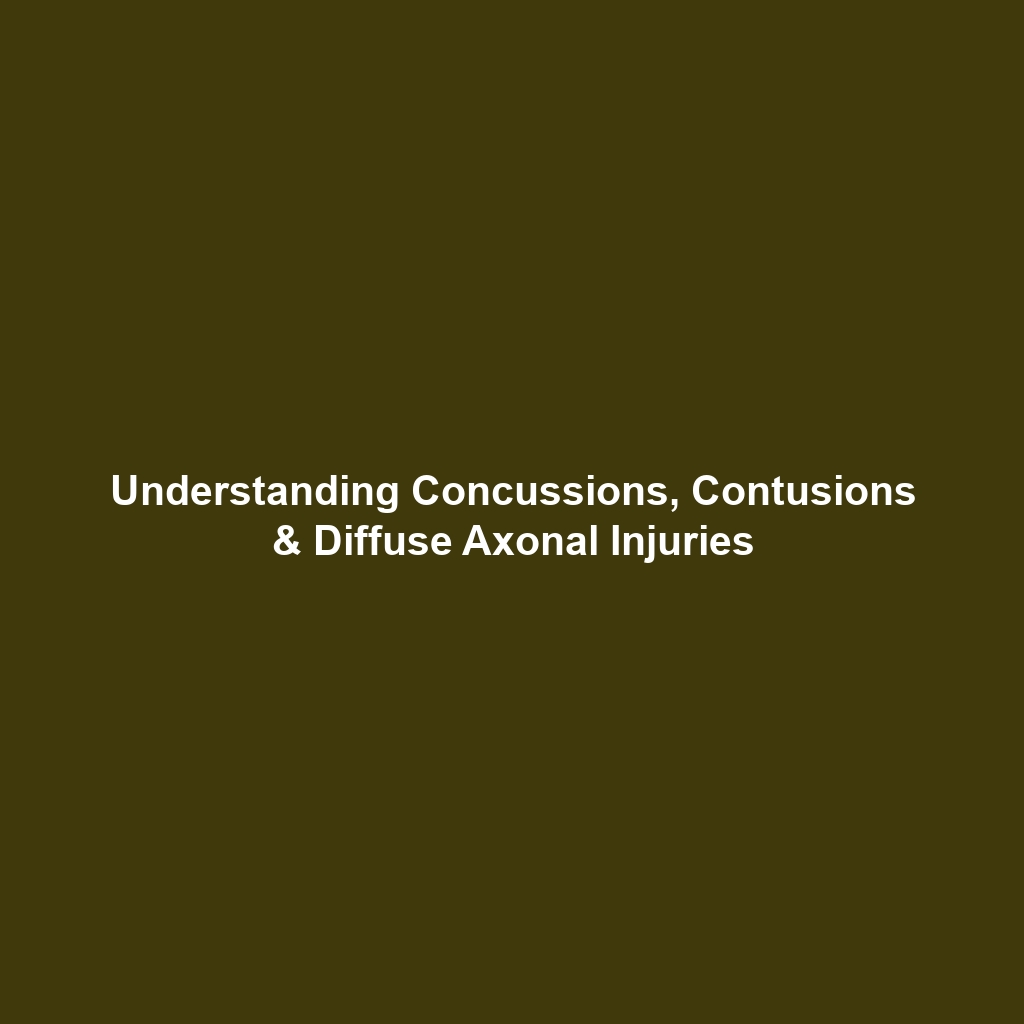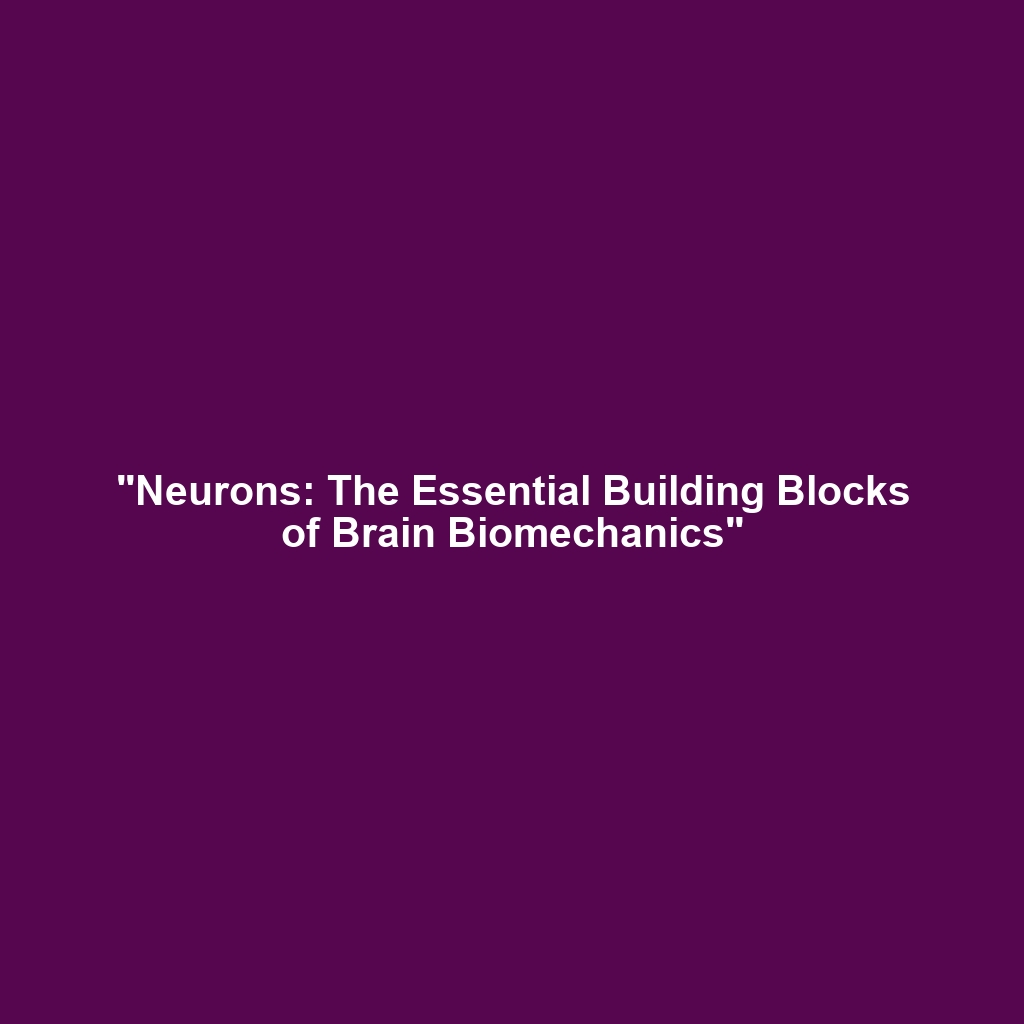Understanding Types: Concussions, Contusions, and Diffuse Axonal Injuries in Biomechanics
Introduction:
In the realm of biomechanics, understanding the impact of physical forces on the body is crucial. Among various injuries caused by physical trauma, concussions, contusions, and diffuse axonal injuries stand out due to their significant implications for health, particularly in sports and physical activities. These injuries are not only critical to the specific individual but also affect broader public health and safety concerns. This article delves into these types of injuries, their mechanics, applications in real-world scenarios, challenges in research, and future innovations within the field of biomechanics.
Key Concepts of Types: Concussions, Contusions, and Diffuse Axonal Injuries
Concussions, contusions, and diffuse axonal injuries are mainly associated with traumatic brain injuries (TBIs) that occur due to sudden impacts or motions. Understanding these injuries requires a close analysis of the principles of biomechanics:
Concussions
A concussion is a mild form of brain injury that occurs when the head experiences a sudden impact or movement, leading to a temporary loss of normal brain function. The biomechanics behind concussions involves rapid acceleration and deceleration forces that can cause the brain to collide with the inner walls of the skull.
Contusions
Contusions are bruises on the brain caused by direct trauma. When a blunt force impacts the skull, it can lead to localized bleeding and swelling, which disrupts normal brain function. These injuries are serious and require thorough biomechanical understanding to assess potential outcomes.
Diffuse Axonal Injuries
Diffuse axonal injury (DAI) results from severe rotational or translational forces that cause widespread damage to the brain’s white matter. These injuries can lead to prolonged unconsciousness or a persistent vegetative state and represent one of the most dangerous types of TBIs in biomechanics.
Applications and Real-World Uses
The study of concussions, contusions, and diffuse axonal injuries has led to critical advancements in several applications within biomechanics, including:
- Preventive Sports Equipment: Helmets and padding designed using biomechanics principles reduce the risk of TBIs.
- Injury Assessment Protocols: Standardized tests and assessments to evaluate injury severity in athletes.
- Rehabilitation Techniques: Development of biomechanically-informed rehabilitation protocols to aid recovery.
Understanding how these injuries manifest in real-world situations aids in designing better safety measures and improving healthcare responses.
Current Challenges
While significant strides have been made in addressing these injuries, several challenges still persist in the study of concussions, contusions, and diffuse axonal injuries:
- Inconsistent diagnostics leading to underreporting of concussions.
- Lack of comprehensive data on long-term effects and recovery processes.
- Challenges in creating universally effective prevention strategies across different sports.
Future Research and Innovations
The future of biomechanics concerning concussions, contusions, and diffuse axonal injuries looks promising, with ongoing research focused on:
- Advanced Imaging Techniques: Innovations that provide clearer insights into brain injuries.
- Wearable Technology: Development of smart helmets and sensors for real-time monitoring of head trauma.
- Biomarkers for TBIs: Research into biological indicators that can predict recovery trajectories.
Conclusion
In summary, concussions, contusions, and diffuse axonal injuries represent critical areas of focus within biomechanics that highlight the profound effects of physical trauma on neurological health. As research advances, so do the methods and technologies employed to prevent, assess, and rehabilitate these injuries. It is vital for medical professionals, athletes, and coaches to remain informed about these developments. For comprehensive coverage on related topics, explore our articles on sports biomechanics and traumatic brain injury prevention.




